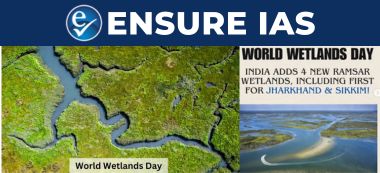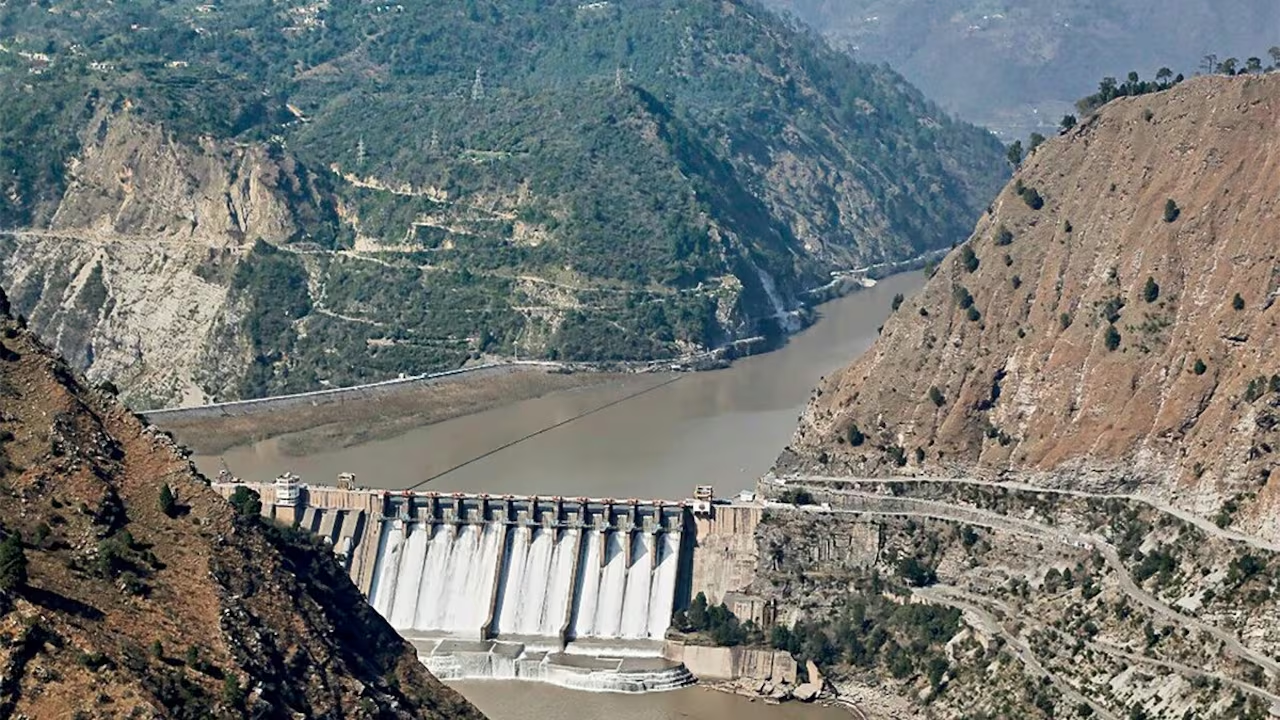- Courses
- GS Full Course 1 Year
- GS Full Course 2 Year
- GS Full Course 3 Year
- GS Full Course Till Selection
- Answer Alpha: Mains 2025 Mentorship
- MEP (Mains Enrichment Programme) Data, Facts
- Essay Target – 150+ Marks
- Online Program
- GS Recorded Course
- Polity
- Geography
- Economy
- Ancient, Medieval and Art & Culture AMAC
- Modern India, Post Independence & World History
- Environment
- Governance
- Science & Technology
- International Relations and Internal Security
- Disaster Management
- Ethics
- NCERT Current Affairs
- Indian Society and Social Issue
- NCERT- Science and Technology
- NCERT - Geography
- NCERT - Ancient History
- NCERT- World History
- NCERT Modern History
- CSAT
- 5 LAYERED ARJUNA Mentorship
- Public Administration Optional
- ABOUT US
- OUR TOPPERS
- TEST SERIES
- FREE STUDY MATERIAL
- VIDEOS
- CONTACT US
World Wetland Day 2025: 4 New Ramsar Sites Announced in India
World Wetland Day 2025: 4 New Ramsar Sites Announced in India
05-02-2025

- On February 2, 2025, the Union Ministry of Environment, Forest and Climate Change (MoEFCC) held World Wetlands Day 2025 celebrations at Parvati Arga Bird Sanctuary, a Ramsar Site in Gonda, Uttar Pradesh.
- This year's theme, “Protecting Wetlands for Our Common Future,” highlights the urgent need for global conservation action.
- India celebrated the day by designating 4 new Ramsar sites:
- Udhwa Lake (Jharkhand's 1st Ramsar site)
- Theerthangal and Sakkarakottai (Tamil Nadu)
- Khecheopalri (Sikkim's 1st Ramsar site)
What Are Wetlands?
- Wetlands are areas of land covered by water (either stagnant or flowing), such as marshes, lakes, bogs, and swamps, which may be permanent or seasonal.
- Ecological Importance of Wetlands:
- Biodiversity hotbeds supporting a wide range of species, including birds, fish, and plants
- Water conservation through groundwater recharge and flood regulation
- Climate change mitigation by acting as carbon sinks
- Economic benefits through fisheries and local economies
The Ramsar Convention:
- The Ramsar Convention, signed on February 2, 1971, in Ramsar, Iran, is an international agreement focused on the sustainable use and conservation of wetlands globally.
- On the same day, World Wetlands Day is now celebrated annually to raise awareness about wetland conservation.
Wetlands in India:
- India became a signatory to the Ramsar Convention in 1982.
- There are 89 Ramsar sites, with Tamil Nadu hosting the highest number (20 sites), followed by Uttar Pradesh (10 sites).
- A recent bird census in Punjab (2023-24) showed a significant decline in migratory bird populations across the province's wetlands, with the Kanjli Wetland experiencing a 49.49% drop in bird numbers, from 1,190 birds in 2021-22 to just 600 in 2023-24.
Punjab's 6 major wetlands include:
- Harike Wetlands (North India's largest Ramsar site, home to Siberian cranes and bar-headed geese)
- Kanjli Wetlands (Supports migratory birds, fish, and turtles)
- Ropar Wetlands (Located along the Sutlej River, providing habitat for various bird species and aquatic life)
- Nangal Wetlands (Annual habitat for over 40,000 migratory birds)
- Beas Conservation Reserve (Home to Indus River dolphins, turtles, and migratory birds)
- Ranjit Sagar Wetlands (Supports otters and migratory birds)
Threats to Wetlands and Suggested Conservation Measures:
|
Threat |
Conservation Measures |
|
Industrial Pollution |
Strict regulations on waste disposal from factories |
|
Illegal Sand Mining |
Implement measures to prevent illegal mining activities |
|
Agricultural Runoff |
Reduce pesticide and fertilizer runoff; protect water quality |
|
Climate Change |
Conduct awareness campaigns on climate impacts and wetlands conservation |
Amrit Dharohar Initiative:
- Launched in June 2023, the Amrit Dharohar initiative seeks to enhance the conservation value of Ramsar Sites in India.
- This program, designed for 3 years, is a joint effort involving various ministries, State Wetland Authorities, and other stakeholders. It focuses on:
- Conservation of species and habitats
- Promoting nature tourism
- Supporting livelihoods linked to wetlands
- Advancing wetlands as carbon sinks
- The initiative aims to ensure sustainable management of wetlands while benefiting local communities and the environment.
|
Also Read |
|
NCERT Books For UPSC |
UPSC Daily Current Affairs |
UPSC Monthly Mgazine |
Best IAS Coaching in Delhi |
Free MCQs for UPSC Prelims |
UPSC Test Series |
ENSURE IAS NOTES |
Our Booklist |




